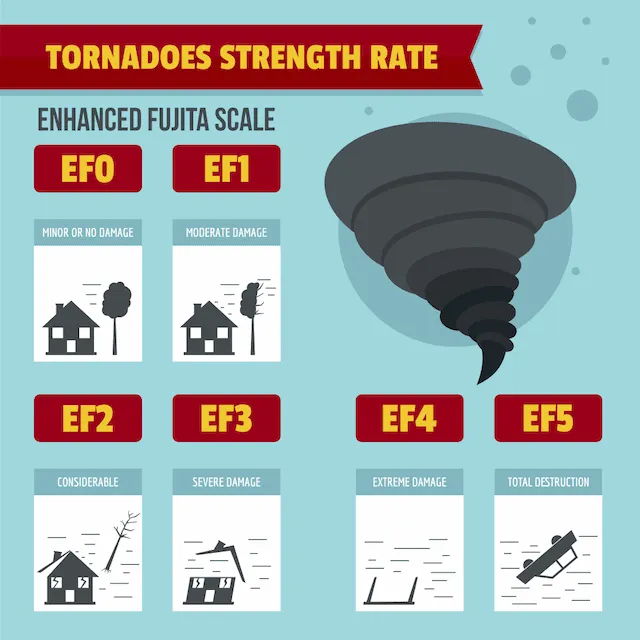Although May typically marks the last month of tornado season, things are far from over. In fact, experts at AccuWeather forecast that this month could be especially dangerous because of a La Nina weather pattern.
Their predictions continue to prove to be correct.
Tornado Activity in May
On May 3 the National Weather Service (NWS) confirmed that five tornadoes touched down in North Texas: two were classified as EF-2s and three as EF-0s. On May 16 the NWS confirmed that an EF-0 tornado touched down in Troy, Texas. On May 19 an EF-0 tornado touched down near Luling, Louisiana, damaging several properties, and on the following morning of May 20 a tornado touched down in Crosby, Texas.
You get the picture.
What Are EF Ratings?
In a nutshell, an EF rating classifies a tornado according to its speed and ability to cause damage.
According to the National Weather Service, the EF Scale, or Enhanced Fujita Scale, is used to assign a tornado a rating based on estimated wind speeds and associated damage. When tornado-related damage is surveyed, it’s compared to a list of Damage Indicators (DIs) and Degrees of Damage (DoD), which help better estimate the range of wind speeds the tornado was likely to have produced. From that, a rating (from EF-0 to EF-5) is assigned—EF-5 being the most severe and damaging.
The EF Scale was revised from the original Fujita Scale to better reflect examinations of tornado damage in order to more closely align wind speeds with related storm damage. The new scale is more reflective of how most structures are designed.
An EF-0 tornado measures in speed from 65 to 85 mph, an EF-1 measures from 86 to 110 mph, an EF-2 measures from 111 to 135 mph, an EF-3 measures from 136 to 165 mph, an EF-4 measures from 166 to 200 mph, and an EF-5 tornado comes in at over 200 mph.

